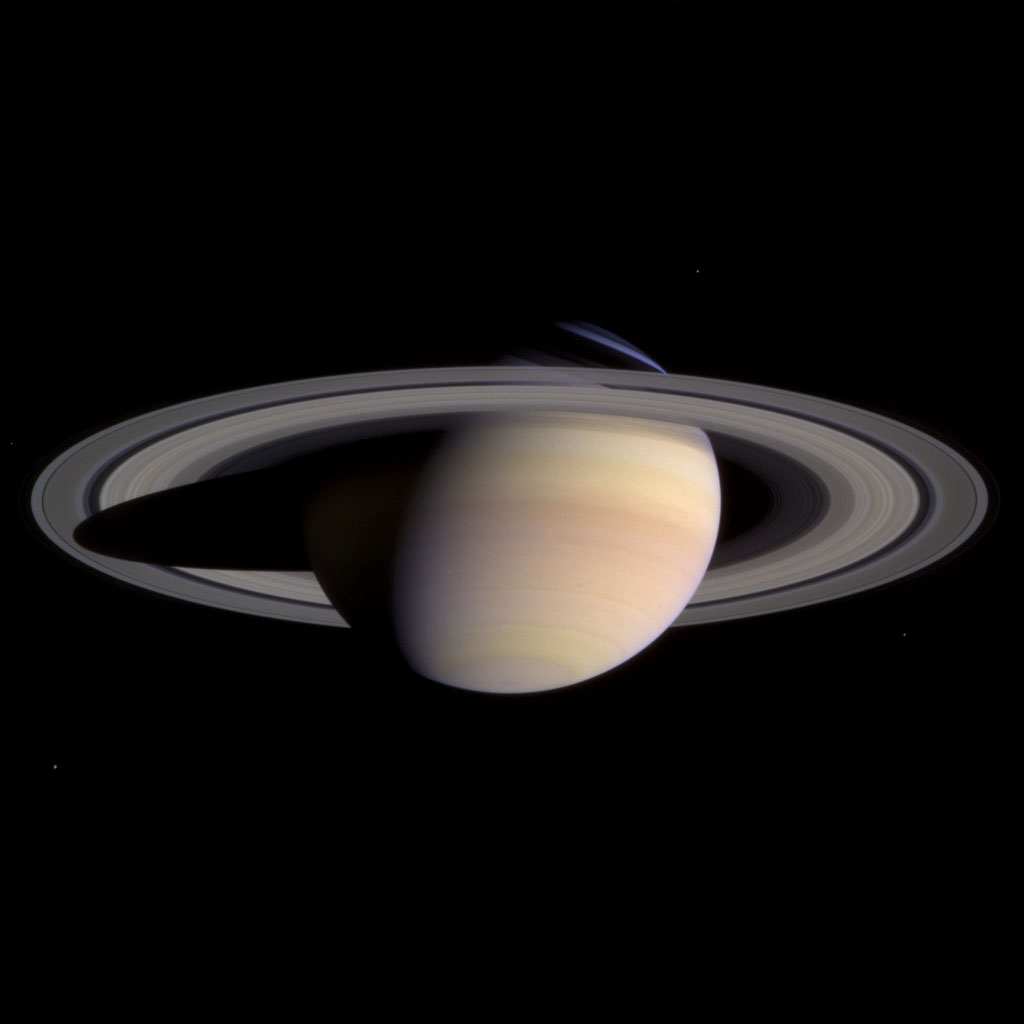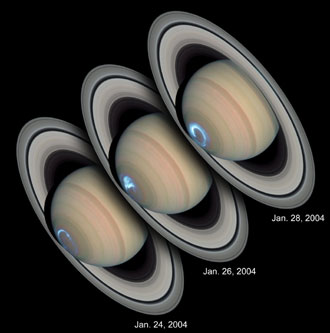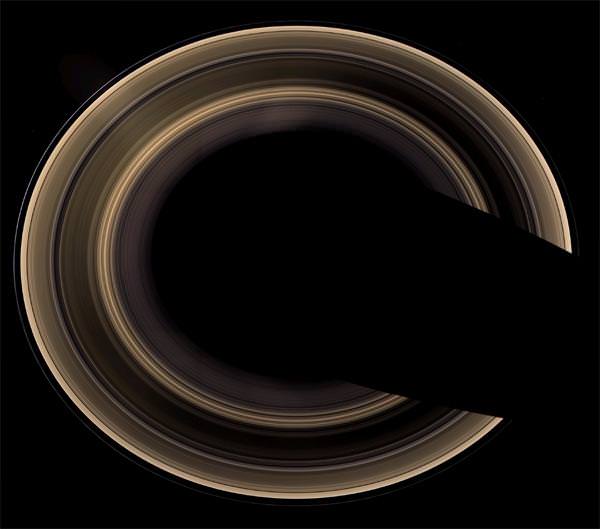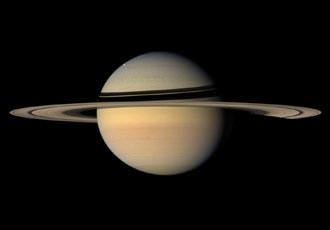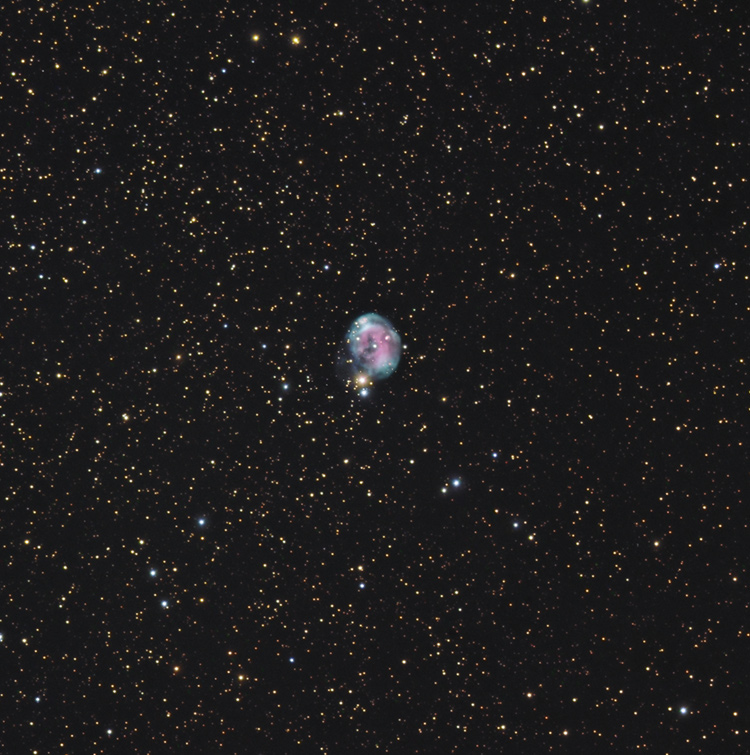Over the weeks we’ve taken a look at some very curious objects which have often raised some wonderful questions. One such question dealt with what could be observed should a supernova event involve a planetary system. In this case, it’s not quite the explosive mass destruction scenario – but a planetary nebula that consumed its planets…
Veteran sky observers have long been aware of the unique structure of planetary nebula NGC 7008. Located about 2800 light years distant in the constellation of Cygnus, report after report shows even amateur telescopes easily resolve out the central star and unusual bright areas in the outer shell. We might wonder about it when we see it, but what lay within is quite unique.
Because the central star of NGC 7008 is so prominent, the original lines of thinking on this nebula’s formation focused around the central star itself. Says Francesco Pala: “Much of the recent attention on primordial stars has focused on the properties of massive objects, considered the natural outcome of first structure formation. While there are reasons to believe that massive stars were common, but not unique, in the early universe, the question of their actual formation is still not adequately understood…. how unique must have been the physical conditions in primordial clouds to yield such an unusual distribution of stellar mass.”
In 1995, the Hubble Telescope was pointed towards NGC 7008. The primary aim of the survey was to find close, resolved main-sequence companions of the central stars, which through main-sequence fitting would provide excellent distance estimates for the nebulae. What they found was only the beginning of the end.
Scientist Mario Perniotto studies planetary nebulae and their gas dynamics. “I first recall the history of PNe which are generated from low and intermediate mass stars through successive mass loss processes starting in the Red Giant phase of evolution and continuing also after the termination of the pulsed AGB phase, where most of the nebular mass is believed to be ejected. The corresponding stellar winds are the ingredients of the nebula. Their initial properties and subsequent mutual interactions, under the action of the evolving stellar radiation field, are responsible for the properties of the nebula.” Through studies with the Hubble, the kinetic structure of NGC 7008 has been observed to have another unusual feature – Fast Low Ionization Emitting Regions.
Says Perinotto: “Attention is focused on FLIERs and on the proposed mechanisms to interpret them. Recent observations with the Hubble Space Telescope have provided us with a wealth of detailed (subarcsec) information on the nebular structures. The inner structure of FLIERs is here illustrated to consist of substructures of various shapes with an high degree of individually from object to object, also within the same planetary nebula. These new data call for deeper theoretical efforts to solve the problems of cosmic gas dynamics, posed by their observed properties.”
But the motions of the gas aren’t all that’s being observed – the dust itself plays an important role. According to studies done by Klaas and Walker, some of NGC 7008’s dynamic structure comes from dual layers of radically different dust which originated from two different sources. Could this be the result of a binary star taking its last twin breath? First the older star… And then the younger? Says Tylenda and Gorny: “Therefore we can conclude that the H-poor layers in these stars have been exposed shortly after the PN formation at the tip of AGB. This excludes, from our considerations, scenaria like that of a final helium shell flash which produced a H-poor, He-burning nucleus surrounded by an old, large nebula.”
But astronomer Noam Soker wasn’t taking that for an answer. “For NGC 7008, a deviation from symmetry is expected and indeed a departure is observed, but the main signature is on the outskirts of the nebula, and hence an interaction with the ISM (interstellar medium) is possible. If the companion is associated with the PN central star, as claimed… I put a question mark, since it is not clear if the morphology is compatible with the claimed companion or is solely due to an interaction with the ISM.”
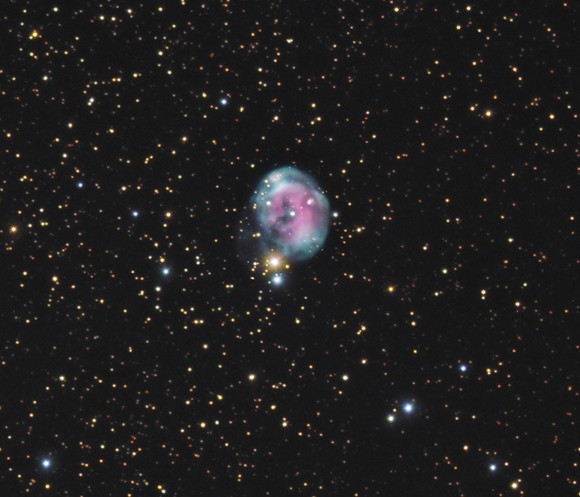
Enter the Instituto de AstronomÃa in México. “We suggest that some of the structures observed in the envelopes of planetary nebulae are caused by the interaction of central star wind and radiation with preplanetary nebula debris: planets, moons, minor objects and ring and ring arcs. Recently considerable amount of planetary material has been reported to exist around solar type stars, this debris could be evaporated during the envelope ejection and alter the chemical abundance and produce some of the envelope inhomogeneities. If there are massive enough rings of material surrounding the progenitor and planets in their vicinity, arc rings could be formed. If the rings are viewed pole on when the envelope is detached from the central star, it will interact with the arc ring material and produce ansae and pedal and garden-hose-shape structures observed in some planetaries.”
Next time you visit NGC 7008 – take a closer look like Dr. Dietmar Hager did. There’s something more to this story than just another pretty cosmic face. Something he recognized and asked me to investigate. Not only does his image reveal the presence of FLIERS and the well resolved central region, but a structure that’s made scientists look again and again over the years. Of all the explanations and science that I’ve researched, I like Noam Soaker’s answer best:
“I propose that the destruction of brown dwarfs and massive planets inside the envelopes of asymptotic giant branch stars can lead to the formations of jets and ansae in elliptical planetary nebulae. Thick disks with jets on their two sides are the plausible outcome of this process. The process is likely to occur at late states of the AGB, and the jets push their way out of the envelopes in the course of a number of year. The Roche lobe overflow continues for several hundred years and destroys the secondaries. This scenario predicts that the same material will be contaminated by two sources. Once source is the AGB cores, from which material can be mixed into the jets and the other consists of the destroyed secondaries.”
Always look twice and think about what you’re observing… Because there is so much more there than what meets the eye!
These awesome images were done by Avanced Optical/ Radio Astronomers and International Associates member Dr. Dietmar Hager from StarGazer Observatory. Many thanks for the investigative challenge!

